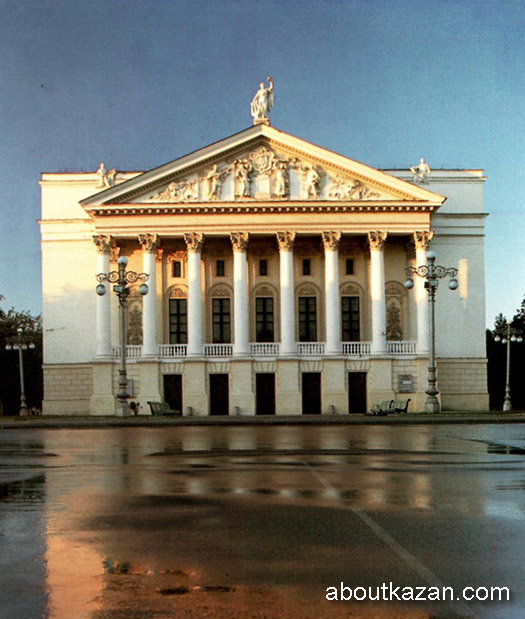Kazan Russia — a thousand-year Russian city
Kazan city of Russia Upper town history
The history of Russian Kazan says that the trading quarter in earlier centuries began at the square where the memorial to Musa Dzhalil stands, at the geometrical centre of Kazan.
Kazan Upper town - Musa Dzhalil memorial

Besides the Kazan City Council (Duma), here were located the trading rows and stalls, the Gostiny Dvor and the Alexander Arcade. Goods from all over the Russian Empire and the world were brought to Kazan city, up the steep slope from the Bulak Canal, which was navigable, especially at high water, until earlier XX century.
One looks in vain for Tatar features in this part of the Kazan city: enchanted Kazan in the last century impressed visitors with its grandiose architecture modeled on central Russian cities. With good reason a visiting Russian writer noted in 1800: "I don't know why they call Moscow the Tatar Rome; it would be much more just and true to call Kazan the Tatar Moscow".
According to Kazan Russia history the Englishman Helmersen in 1833, even after the terrible fire of 1815 which had destroyed half of the Kazan city, considered that Kazan undoubtedly falls among the best built cities in Russia. The memory of those times is preserved in the old names of houses on Lenin Street, formerly Voskresenskaya, which leads from the Spassky Tower in the Kremlin to the famous Kazan State University.
Kazan Upper town - Kazan State University

For more information about Russia you may visit the following Russian cities, towns and regions guidebook
© 2007—2012 Alex Grachov, Sergey Kozin. All rights reserved. Copyright/IP Policy.






